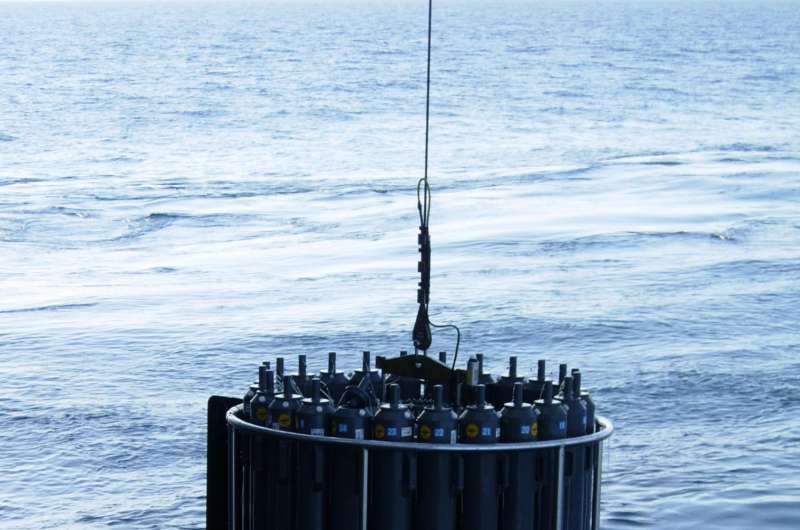First direct measurements of Pacific seabed sediments reveal strong methane source

Researchers from Queen Mary University of London (QMUL) have discovered a major source of an important greenhouse gas in the Tropical Pacific Ocean for the first time.
Methane is a powerful greenhouse gas, and a major contributor to increasing global temperatures. The largest pool of marine methane on Earth spans from the coast of Central America to Hawaii in the Tropical Pacific Ocean.
The atmospheric concentration of methane has increased over the last few decades and human activities have played an important role in this trend. Scientists are keen to understand the natural production and consumption of methane, which will help to assess the extent of human impact on these natural processes.
The team from QMUL's School of Biological and Chemical Sciences carried out the work on a research cruise. They set sail from Panama aboard the RRS James Cook, and collected sediment from the seafloor and mapped the methane pool in the top 1000 m of oceanic water over six weeks.
Writing in the journal for the International Society for Microbial Ecology, (Friday 24 February 2017) the team describe for the first time how microbial methane production in parts of the seafloor, where the water is very low in oxygen, feeds a vast methane pool which extends from Panama, up to Mexico and as far out as the Hawaiian archipelago.
Joint lead author Felicity Shelley, from QMUL's School of Biological and Chemical Sciences, said: "The research is novel because it's the first time anyone has successfully retrieved sediment from this part of the ocean and directly measured methane production using specialised equipment on board the research ship."
"It is important that we understand how microbes produce and consume this powerful greenhouse gas, especially in the oceans where we currently understand very little."
More information: 'Origin and fate of methane in the Eastern Tropical North Pacific Oxygen Minimum Zone Panagiota' International Society for Microbial Ecology, 2017.
Provided by Queen Mary, University of London

















